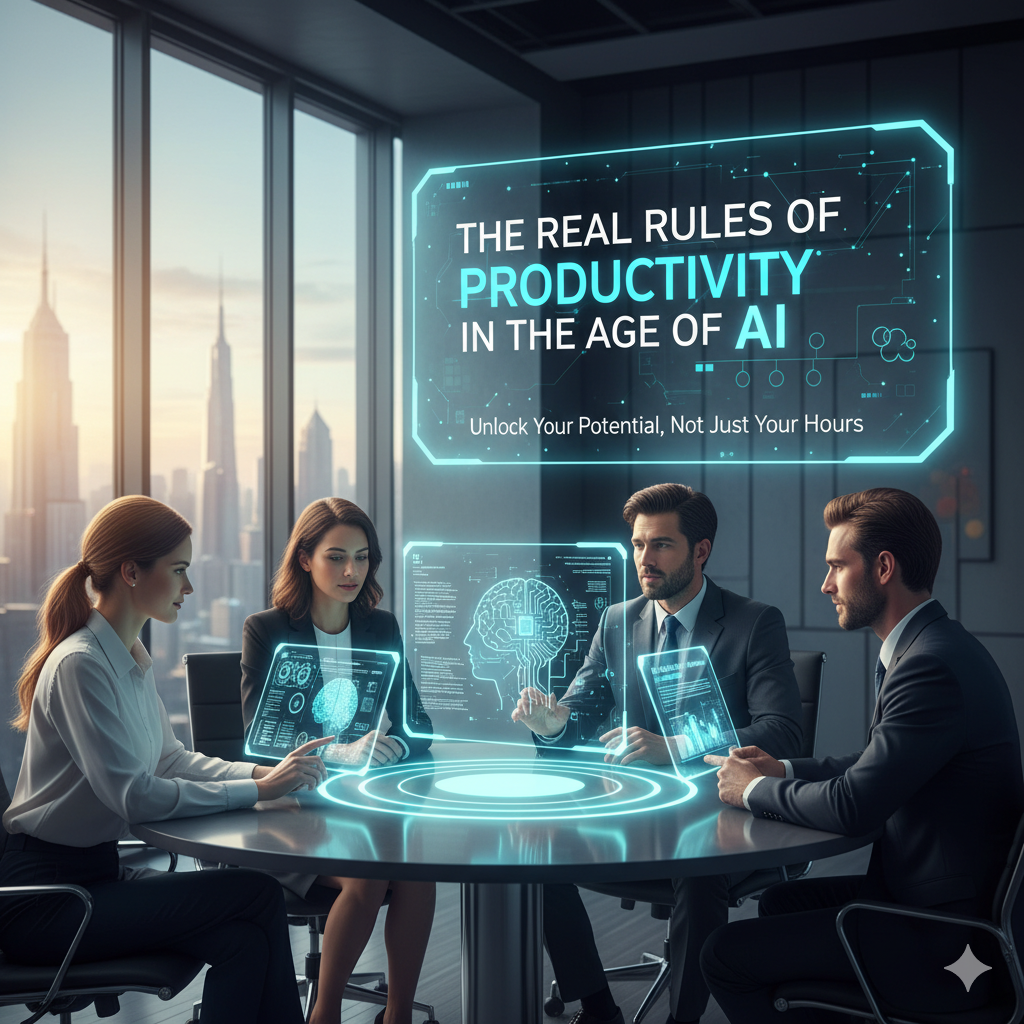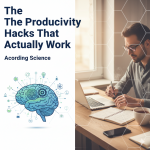Introduction: The Overwhelming Search for the Perfect System
If you’ve ever felt overwhelmed by the endless sea of productivity apps, you’re not alone. The pressure to find the “perfect” system—one that promises to organize your life, manage your tasks, and unlock peak performance—can be paralyzing. It’s a search that often leaves us feeling more scattered than when we started. This isn’t just a feeling; it’s a widespread reality. According to one source, “92% of workers still rely on scattered tools and inconsistent methods to manage their work.”
This post aims to cut through that noise. Instead of adding another complex tool to your list, we’re sharing five surprising and counter-intuitive takeaways about modern productivity. These principles tell a story about how our relationship with work is evolving, and they can help you build a system that actually works by changing how you think about getting things done.
1. Takeaway #1: Your Brain Isn’t a Hard Drive—It’s a Processor
The foundational principle of many modern productivity methods, like Getting Things Done (GTD), is the need to externalize information. When tasks, ideas, and reminders pile up in your head, the result is predictable: you feel “stressed, overwhelmed, and uncertain.” This happens because we fundamentally misuse our minds, treating them as storage devices.
Productivity consultant David Allen put it best:
“Your head’s a crappy office”
This insight is powerful because it reframes the purpose of productivity tools. Their primary job isn’t to create an intricate organizational system; it’s to be a simple offloading mechanism. This frees up your brain to stop acting as a stressed, inefficient hard drive and start doing what it does best: processing information, making connections, and thinking creatively. The goal is to clear your mental workspace, not to build a second, more complicated one.
2. Takeaway #2: The Search for the “Perfect App” Is the Ultimate Procrastination Hack
This fundamental misunderstanding of our brain’s purpose is what fuels our most common and counterproductive habit: the endless search for the “perfect app.” The hunt for the next best tool, often called “shiny object syndrome,” is a trap that productivity expert Francesco D’Alessio describes as “jumping around apps” in a futile attempt to find a flawless solution.
This cycle of downloading, migrating, and configuring new apps is a subtle form of procrastination, where managing the system becomes more demanding than doing the actual work. As one user on Reddit confessed after spending hours testing different tools, “I used to be obsessed with finding the perfect productivity app… Eventually, I realized that this search was becoming unproductive in itself.” This takeaway gives you permission to stop searching. The real key to progress isn’t finding the perfect app; it’s building a simple, stable system and sticking with it.
3. Takeaway #3: The Counter-Intuitive Trend: Ditching Complexity for Simplicity
As a direct consequence of this app-hopping fatigue, a surprising trend is emerging: users are actively abandoning powerful, feature-rich platforms for simpler, often native, tools. While an all-in-one workspace might seem appealing, the reality can be far more complicated, creating a maintenance overhead that prevents a state of flow.
One user on Reddit noted that while “Notion is cool and all,” it can sometimes feel like “you need a Notion course just to stay organized.” In response, many are returning to fundamentals. The same user explained, “Lately, I’ve gone back to basics: just using Apple Notes. It’s simple, fast, and surprisingly effective.” This trend highlights a growing desire for tools that reduce friction, not add to it, reinforcing the idea that the best system is the one that gets out of your way.
4. Takeaway #4: AI’s Real Superpower Isn’t Grand Strategy, It’s Erasing Annoying Chores
While the hype around Artificial Intelligence is immense, its current role in day-to-day productivity is more practical than revolutionary. As productivity expert Tiago Forte notes, AI’s primary impact today is taking over the equivalent of “clerical work.” This is the catalyst making the entire shift toward simplicity urgent, as AI automates the very tasks that complex systems were built to manage.
Francesco D’Alessio breaks this down into three key areas:
- Admin: Automatically tagging your notes or adding a task to the correct project.
- Efficiency: Auto-scheduling tasks in your calendar based on priority and deadlines.
- Errands: Auto-drafting a reply to an email or summarizing a long thread.
Concrete examples are already appearing in popular tools. Superhuman uses AI for hyper-specific search; as D’Alessio puts it, “I can just be like, you know, something hyper specific like ‘what was that thing that Thiago mentioned 3 months ago’ and it actually comes out with something useful.” Meanwhile, in Microsoft Copilot, “The AI will analyze the tone, content, and structure of your communication and offer tips to make it clearer and more empathetic.” Leveraging AI for what it’s good at right now—reducing friction—is the key to unlocking its immediate value.
5. Takeaway #5: “Productivity” Isn’t About ‘Getting More Done’ Anymore
As AI systematically eliminates this clerical work, it forces a profound question: what is left for us to do? This leads to the most significant shift of all, a redefinition of “productivity” itself. As AI becomes more adept at handling administrative labor, the focus of human work is evolving. According to a discussion between Tiago Forte and Francesco D’Alessio, human productivity will increasingly be defined by two key qualities:
- The quality of our decision-making.
- The quality of our creativity.
As AI automates the “doing,” the value we provide will shift to the “thinking.” The manual organization that once defined productivity will become a secondary activity. As D’Alessio explains:
“you organizing your notes and reshuffling your tasks and calendar that will become a mindful activity versus actually being productive”
This means the future of productivity isn’t about the quantity of tasks we can complete in a day. It’s about the quality and impact of our unique human contributions—our insights, decisions, and creative output.
Conclusion: Redefining Your Relationship with Work
The modern productivity landscape isn’t about finding a single, perfect tool. It’s about a fundamental shift in mindset. The trends of app-hopping and system complexity were flawed attempts to solve a problem—managing mental clutter—that AI is now beginning to solve at a technical level. This shift liberates human focus for its ultimate purpose: high-quality thinking and creativity. By embracing simplicity, resisting the urge to constantly switch tools, and leveraging AI to erase annoying chores, we can build a more sustainable and impactful relationship with our work.
As AI continues to handle more of the “doing,” how will you shift your focus to improve the quality of your thinking and creativity?












